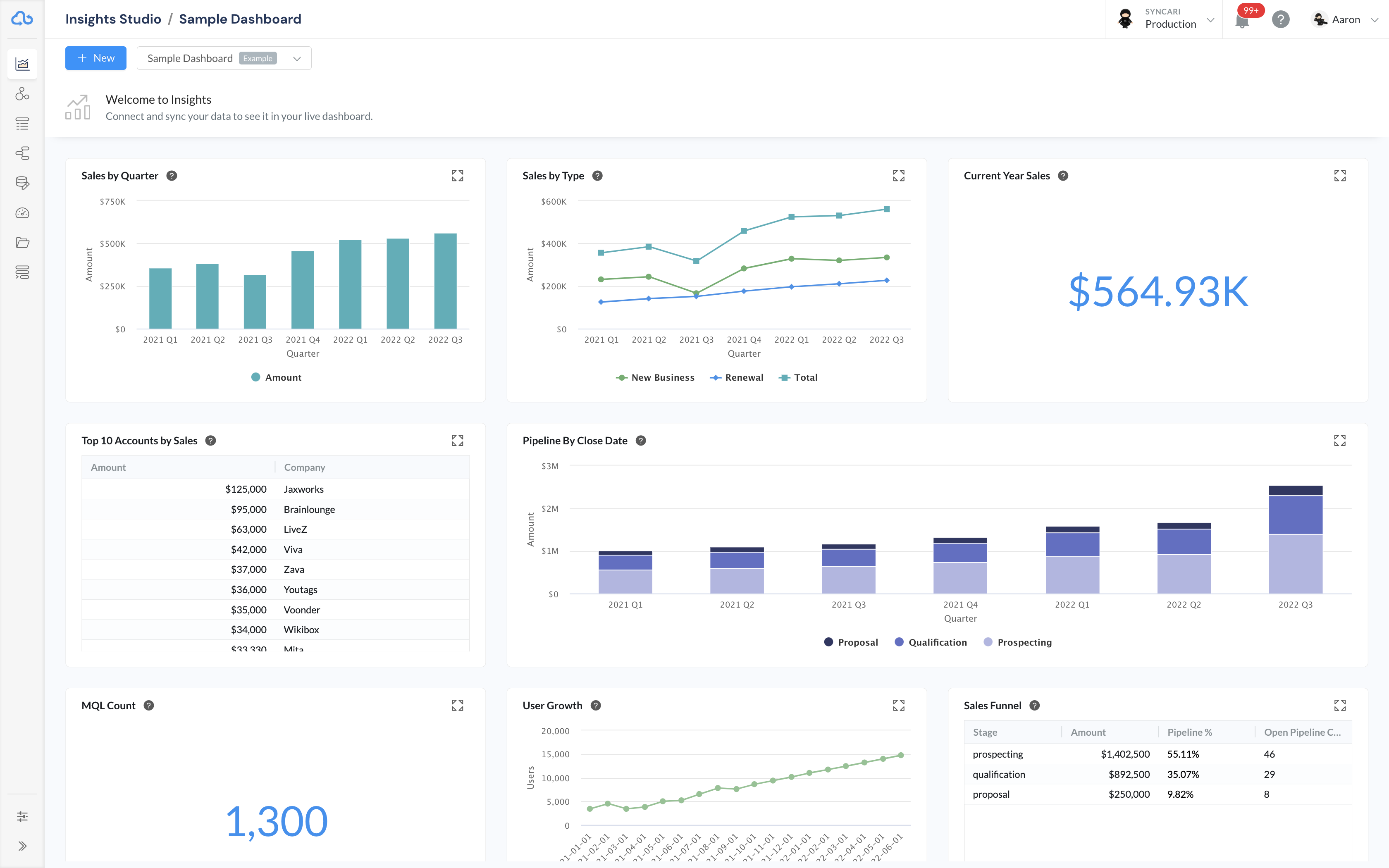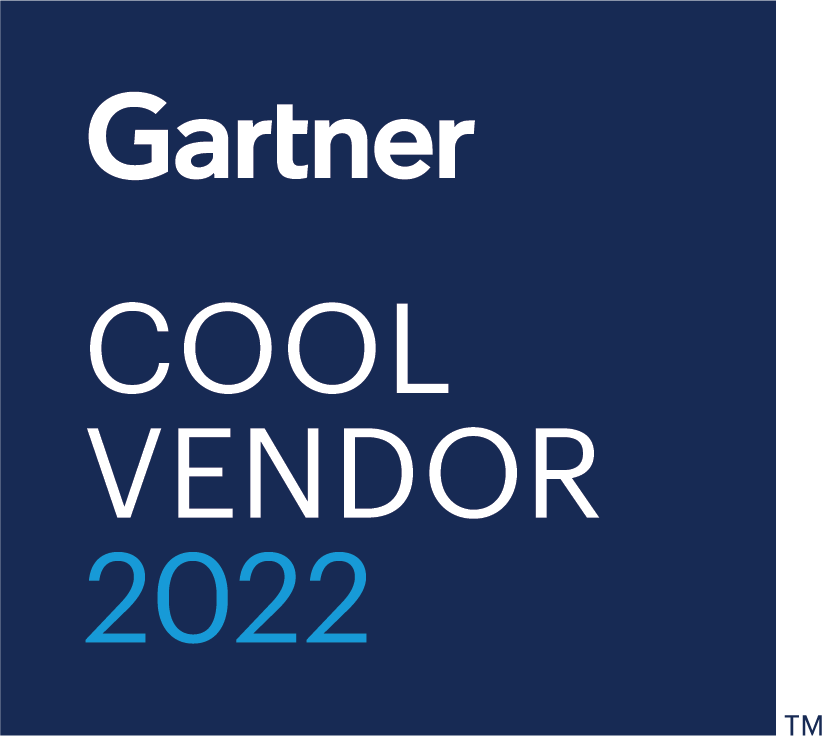
The platform that inspired RevOps Data Automation
Beneath every great GTM team is a strong foundation of unified customer data.

Beneath every great GTM team is a strong foundation of unified customer data.



Actualize RevOps ambitions



When you have customer data that’s accurate and available, you get better alignment, tighter GTM coordination, and more predictable outcomes.
Get all your systems and departments on the same page with data. Syncari’s revenue operations platform allows you to easily stitch disparate systems together into one unified data model in hours, not years.
Keep your departmental and BI reports aligned with consistent, trusted data. Syncari syncs all your top systems for you, in near-real-time, following your data governance rules.

Create data policies to clean, augment, enrich, normalize and transform your data. Then, establish a source of truth per field and apply these policies across your entire stack to unlock data consistency everywhere.
Create interconnected revenue processes that flow across systems with drag-and-drop tools and pre-built templates for common RevOps programs like lead-to-account matching, lead routing, and quote-to-cash.

Gartner Cool Vendor™
By 2026, Gartner predicts 65% of B2B sales organizations will transition from intuition-based to data- driven decision making using technology that unites workflow, data and analytics. The fact that you can do all 3 with Syncari is why we believe we were named a 2022 Cool Vendor in the emerging category of RevOps Data Automation.

RevOps Data Automation refers to the platforms and processes related to unifying customer information and automating workflows related to first party data. Typically, this includes contacts, accounts and other data types across sales, marketing, finance, customer success and product usage systems.
The benefits of RevOps data automation include increased efficiency, improved data accuracy, better visibility into revenue performance, and the ability to make data-driven decisions.
RevOps data automation can automate various types of revenue-related data, including sales data, marketing data, financial data, and customer data.
The different tools used for RevOps data automation include customer relationship management (CRM) software, marketing automation software, financial management software, and data analytics software.
RevOps data automation is typically implemented through the integration of different software systems to automate the flow of data across different departments and functions within an organization.
Some common use cases for RevOps data automation include lead management, sales forecasting, customer segmentation, and revenue reporting.
RevOps data automation helps improve revenue growth by providing better visibility into revenue performance, identifying revenue growth opportunities, and enabling data-driven decision-making.
Some potential challenges with implementing RevOps data automation include data silos, data quality issues, and resistance to change from different departments within an organization.
RevOps data automation can impact job roles within an organization by changing the nature of certain tasks and requiring new skill sets, such as data analytics and software integration expertise.
By automating routine tasks like data entry and synchronization, it can reduce the workload for employees in roles like sales and marketing operations.
RevOps data automation can improve collaboration between different functions, requiring employees to work more closely together and share data more effectively.
Overall, revenue operations data automation can lead to more efficient processes, improved data accuracy, and a more data-driven culture within an organization.
An organization can measure the success of RevOps data automation by tracking key performance indicators (KPIs) such as revenue growth, lead conversion rates, customer retention rates, and operational efficiency metrics.
It’s no secret that RevOps is expected to provide a sea change of meaningful impact to Go-To-Market teams and initiatives everywhere. This new RevOps mandate includes many domains of oversight, from sales processes to revenue reporting, and more frequently, marketing and CS and finance operations.
However, many RevOps teams are tasked with administering systems like CRM, marketing automation, CS platforms, while only having partial ownership of the global customer data model. Data and product teams often own core components of the customer data model, and this shared oversight makes it difficult for RevOps teams to get the clean, unified customer data they need to move quickly.
On top of that, many RevOps teams need extreme agility and flexibility with the data and fields they manage. This can be difficult for data teams to support. In most GTM teams, this means the fields ops teams are creating and deploying are only rarely in alignment with the data architecture that is considered approved or central to the organization.
Without a cohesive customer data strategy, GTM teams will suffer from poor data quality and sluggish operationalization of new data-driven initiatives. To solve these needs, RevOps Data Automation is an approach that gives both data teams and RevOps teams a shared space to coordinate, orchestrate, clean and unify customer data.
Syncari first began using the term RevOps Data Automation to describe itself in 2021. Since then, it has become an officially recognized technology category according to Gartner, and more technology providers have begun using the term.
While both categories were created by Syncari, RevOps Data Automation refers to the domain of a specific organization – Revenue Operations. Customer Data can be owned and optimized by other operations teams (Marketing Operations frequently takes charge of unifying customer data), as well as data leaders, heads of technology, and product leaders.